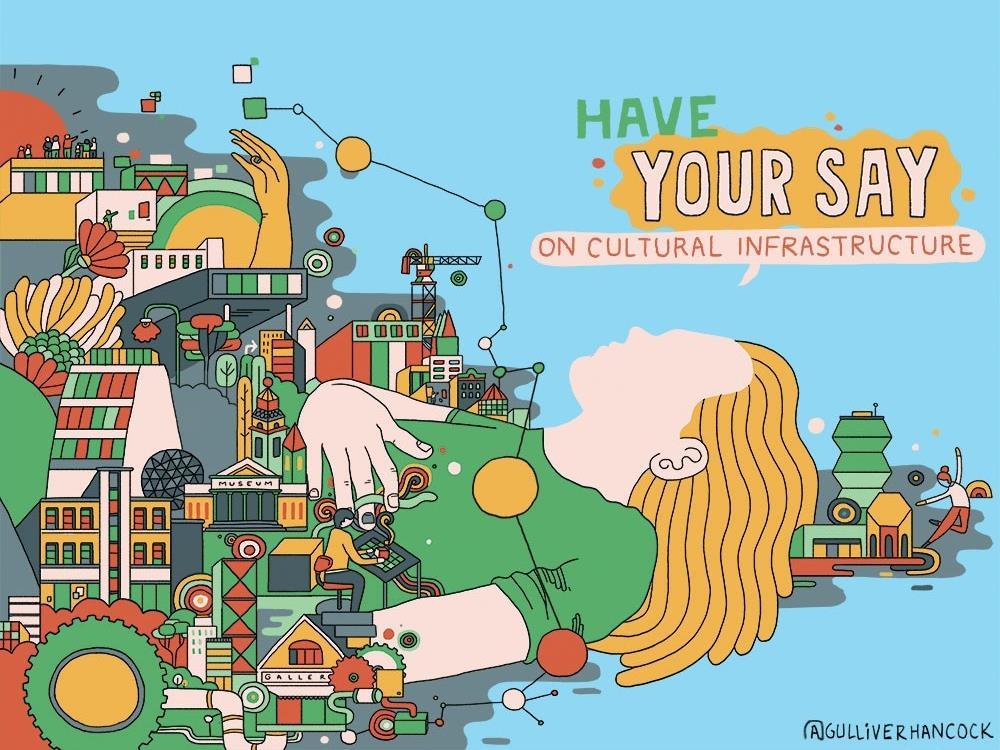Image supplied
The art world loves acronyms, and a new one – CIPMO – will soon roll off our tongues as its impact is felt across NSW. The Cultural Infrastructure Program Management Office (CIPMO) has been formed to provide a coordinated approached to cultural infrastructure across NSW. It is the first time the NSW Government has taken an eagle-view, heavily investing in a big picture vision that targets cross-ecology needs.
CIPMO could be described as “new thinking” government. It is all about pushing beyond the bureaucratic silo to better connect with, plan for, and manage the roll out of cultural infrastructure across the State in tandem with its stakeholders.
It sits under the Department of Planning and Environment alongside Create NSW, and while quite separate to Create NSW, could be thought of as a house – the supporting framework within which cultural activity can exist. While it has been set up to address the needs of the sector, it will also take into account emerging trends, challenges, and opportunities through to 2025 and beyond.
Notwithstanding, it’s priority is to get it right. Often, big messaging through government can get lost in the rhetoric. So CIPMO is starting with you – they want to hear from the sector about its aspirations, and how best government can engage with its communities.
Craig A. Limkin, Executive Director, Cultural Infrastructure Program Management Office told ArtsHub: ‘Throughout February, CIPMO will be holding 16 cultural sector workshops and 14 community pop up kiosks, across 15 locations around the State.
He continued: ‘CIPMO is committed to ensuring the arts and cultural sector, as well as the wider community, have the opportunity to participate in the consultation process. Their voices are integral in making sure the NSW Cultural Infrastructure Plan to 2025 (CIP2025) is relevant to the community and delivers maximum benefits.’
Have your say. Click and complete the sector survey.
Limkin added: ‘The voice of the community, partnered with extensive key research, will make up a strong proportion of the Plan, as the building or upgrading of cultural infrastructure does not occur in isolation from the community that use them.’
CIPMO is committed to raising the cultural infrastructure of NSW to a world standard. Limkin believes that to achieve this, we must consider not only the merit of the investment, but its long-term impact as well.
‘This is a once in a generation opportunity,’ he added.
What is infrastructure and how can you impact its direction?
When we conjure up the word infrastructure we tend to think of freeways, hospitals, universities – bricks and mortar big development. But in reality, infrastructure is just as much about the organic networks between these things, where culture is the connective tissue.
As defined by Infrastructure NSW’s advice to government (October 2016), ‘Cultural infrastructure includes buildings and spaces that accommodate or support the visual arts, crafts, media arts, performing arts, heritage, museum, archives, libraries, publishing, sound recording, film, audio visual, radio and television.
‘It also includes the digital and technological infrastructure that enables online access to collections and performances and widens engagement, participation and appreciation for all audiences.’
Limkin told Artshub: ‘Cultural infrastructure supports urban renewal and regional economic development with new cultural projects proving highly successful in leading the revitalisation, regeneration and rebranding of cities and towns.’
Simply, creative cities are more liveable and more economically sustainable, so how do we better plan for them?
CIPMO will test five key directions during the consultation:
- World class, contemporary facilities
- Access to space for community participation in culture
- Cultural infrastructure for a competitive and thriving cultural sector
- Cultural infrastructure improves the standard of living and quality of life in a community
- Partnering to increase impact, opportunities and innovation
Limkin added that CIPMO’s Masterplan – CIP2025 – will recognise that building or upgrading cultural infrastructure does not occur in isolation from the communities that use them.
‘The consultation process will help identify opportunities across the state, including the small and medium sector,’ he assured.
To make a difference to NSW’s future, be part of its planning. Complete the sector survey before 25 February 2018
What will CIPMO consider?
CIPMO will leverage key partnerships with the private sector, not-for-profit, volunteer organisations, various government agencies, key arts and cultural institutions, as well as cultural infrastructure owned or supported by local councils.
Within the CIP2025, the types of cultural infrastructure that will be covered will include:
- Performance – e.g. live music venues, theatres
- Exhibition – e.g. galleries, museums, screen, artist-run spaces, Aboriginal Keeping Places
- Community and participation – e.g. community halls
- Libraries and archives – e.g. local libraries
- Practice, education and development – e.g. art schools, rehearsal spaces, studios
- Commercial and enterprise – e.g. creative retail, cinema, co-work spaces
- Festival, event and public – e.g. outdoor event space, public art
- Collections – e.g. storage, digitisation
‘Relevant and sustainable infrastructure can only exist if it is delivered with clear plans for how support for the artists, collections and programs will be resourced into the long term. These plans will require engagement and partnerships with peers and communities in our state and across the globe,’ said Limkin.
He concluded that cultural precincts have the ability to transform neighbourhoods into diverse, energetic, community focused places to live, work and visit.
‘Supporting and growing NSW’s vibrant cultural life is the foundation of the work that CIPMO will deliver as we revitalise, regenerate and rebrand cities and towns,’ Limkin promised.
The survey will only take 10 minutes but it will impact the State’s cultural engagement for a least 10 years.





